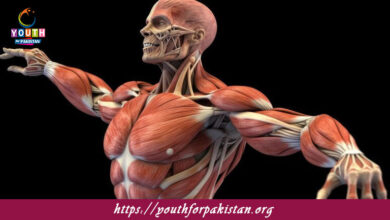Gravitational Potential Energy MDCAT MCQs with Answers

Welcome to the Gravitational Potential Energy MDCAT MCQs with Answers. In this post, we have shared Gravitational Potential Energy Multiple Choice Questions and Answers for PMC MDCAT 2024. Each question in MDCAT Physics offers a chance to enhance your knowledge regarding Gravitational Potential Energy MCQs in this MDCAT Online Test.
Gravitational Potential Energy MDCAT MCQs Test Preparations
Gravitational potential energy is defined as the energy an object has due to:
a) Its position relative to a reference point
b) Its velocity
c) Its temperature
d) Its shape
If the height of an object is increased from 2 meters to 4 meters, its gravitational potential energy:
a) Doubles
b) Quadruples
c) Halves
d) Remains the same
The gravitational potential energy of a 10 kg object at a height of 5 meters is:
a) 50 Joules
b) 100 Joules
c) 500 Joules
d) 5 Joules
Which of the following does NOT affect the gravitational potential energy of an object?
a) Mass
b) Height
c) Acceleration due to gravity
d) Speed
The unit of gravitational potential energy is:
a) Joule
b) Newton
c) Watt
d) Meter
If the mass of an object is doubled and its height remains constant, its gravitational potential energy:
a) Doubles
b) Quadruples
c) Halves
d) Remains the same
Gravitational potential energy is greatest when an object is:
a) At its highest point
b) At its lowest point
c) In motion
d) At rest
The gravitational potential energy of an object is zero when:
a) It is at the reference point
b) It is moving
c) It is compressed
d) It is heated
To increase the gravitational potential energy of an object, you can:
a) Increase its height
b) Decrease its mass
c) Decrease its velocity
d) Decrease its height
The gravitational potential energy of a 2 kg object at a height of 8 meters is:
a) 16 Joules
b) 80 Joules
c) 8 Joules
d) 32 Joules
The work done to lift an object to a certain height is equal to its:
a) Gravitational potential energy
b) Kinetic energy
c) Elastic potential energy
d) Thermal energy
A 5 kg object at a height of 2 meters has a gravitational potential energy of:
a) 10 Joules
b) 50 Joules
c) 20 Joules
d) 100 Joules
The gravitational potential energy of an object is directly proportional to:
a) Its height and mass
b) Its speed
c) Its temperature
d) Its volume
The gravitational potential energy of an object is converted to:
a) Kinetic energy when it falls
b) Elastic potential energy when it is stretched
c) Chemical energy when it reacts
d) Thermal energy when heated
The gravitational potential energy of an object with a mass of 3 kg at a height of 4 meters is:
a) 12 Joules
b) 24 Joules
c) 30 Joules
d) 40 Joules
The potential energy of an object depends on:
a) The reference point chosen
b) The time it has been at height
c) Its initial velocity
d) Its temperature
When an object is lowered to a lower height, its gravitational potential energy:
a) Decreases
b) Increases
c) Remains constant
d) Becomes negative
The gravitational potential energy of a 6 kg object at a height of 3 meters is:
a) 18 Joules
b) 60 Joules
c) 12 Joules
d) 30 Joules
To find the gravitational potential energy of an object, you need to know:
a) Its mass, height, and gravitational acceleration
b) Its temperature and volume
c) Its speed and shape
d) Its density and color
The gravitational potential energy of an object is maximum at:
a) The highest point of its trajectory
b) The lowest point of its trajectory
c) The midpoint of its trajectory
d) The point of maximum speed
The change in gravitational potential energy of a 4 kg object when it is raised by 2 meters is:
a) 8 Joules
b) 16 Joules
c) 4 Joules
d) 2 Joules
The gravitational potential energy of an object can be increased by:
a) Raising the object
b) Increasing its speed
c) Heating the object
d) Reducing its volume
The gravitational potential energy of a 8 kg object at a height of 10 meters is:
a) 80 Joules
b) 160 Joules
c) 40 Joules
d) 20 Joules
If the acceleration due to gravity were to decrease, the gravitational potential energy of an object would:
a) Decrease
b) Increase
c) Remain unchanged
d) Double
The gravitational potential energy of a 1 kg object at a height of 15 meters is:
a) 15 Joules
b) 30 Joules
c) 45 Joules
d) 10 Joules
The work done to lift an object is equal to its change in:
a) Gravitational potential energy
b) Kinetic energy
c) Elastic potential energy
d) Thermal energy
The reference point for measuring gravitational potential energy is:
a) Arbitrary and can be chosen based on convenience
b) Always the ground
c) The center of the Earth
d) The top of the object
The gravitational potential energy of a 12 kg object at a height of 5 meters is:
a) 60 Joules
b) 120 Joules
c) 50 Joules
d) 100 Joules
The gravitational potential energy of an object decreases when:
a) It is lowered
b) It is raised
c) Its mass is increased
d) Its velocity is increased
The gravitational potential energy of a 3 kg object at a height of 7 meters is:
a) 21 Joules
b) 14 Joules
c) 30 Joules
d) 7 Joules
Which factor does NOT affect the gravitational potential energy of an object?
a) Its color
b) Its mass
c) Its height
d) Acceleration due to gravity
If an object of mass 2 kg is raised from 5 meters to 10 meters, the change in gravitational potential energy is:
a) 100 Joules
b) 50 Joules
c) 20 Joules
d) 30 Joules
A 4 kg object at a height of 2 meters has a gravitational potential energy of:
a) 8 Joules
b) 16 Joules
c) 12 Joules
d) 4 Joules
The potential energy of an object in a gravitational field depends on:
a) Its mass and height
b) Its volume and temperature
c) Its shape and speed
d) Its density and color
The gravitational potential energy of a 7 kg object at a height of 9 meters is:
a) 63 Joules
b) 81 Joules
c) 72 Joules
d) 45 Joules
Which of the following increases the gravitational potential energy of an object?
a) Increasing the object’s height
b) Decreasing the object’s mass
c) Decreasing the object’s height
d) Reducing the object’s speed
The gravitational potential energy of an object at a height of 10 meters with a mass of 4 kg is:
a) 40 Joules
b) 100 Joules
c) 60 Joules
d) 20 Joules
An object with a mass of 5 kg is lifted from 3 meters to 8 meters. The work done is equal to:
a) 25 Joules
b) 50 Joules
c) 100 Joules
d) 20 Joules
If you are interested to enhance your knowledge regarding Physics, Chemistry, Computer, and Biology please click on the link of each category, you will be redirected to dedicated website for each category.





